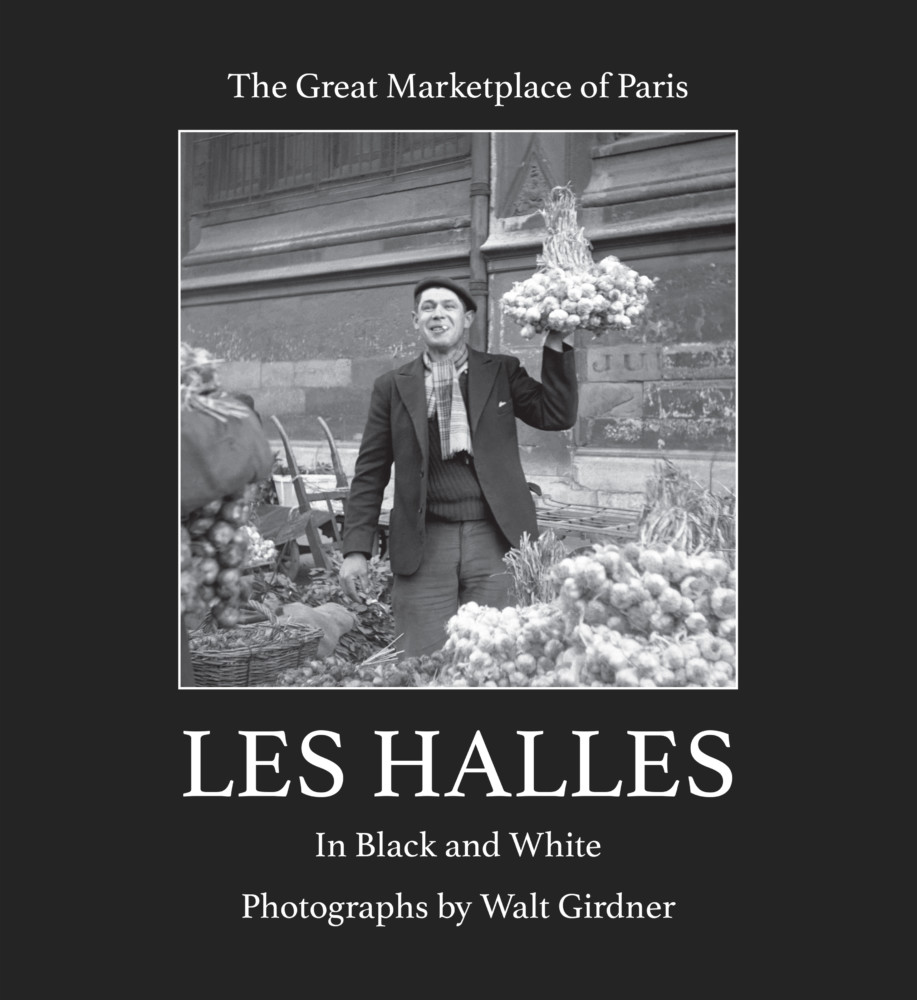

Walt lived to see places and people. And take photos of what he saw. So his interpretation of what he saw is silently expressed through the images. After carrying a rifle in France and Germany during World War II, he came back to the U.S. and then joined a reverse migration of artists, singers and bohemians, going back to Paris where dollars went a long ways and life was good. He sold freelance photo stories to the big magazines of his time. But the pictures of Les Halles were never sold to a publisher. They tell too big a story. By looking through his lens, you can see that Walt was fascinated by the vibrancy of the market, the intensity of the back-and-forth between buyer and seller, and by the light in the pre-dawn hours, sliding into dawn and then early morning, when the people of the market cast long shadows. A massive church, St. Eustache, served as the backdrop for a big chunk of these photos. In the most mood-filled shot, the church is silhouetted in the darkness before dawn. One light is seen at its base, illuminating a small bookkeeper’s shelter. The massive stone edifice has stood for 400 years, through a revolution, through war and peace. Against the ancient structure, the bookkeeper is a tiny, solitary figure doing her work one early morning. In other photos, the emotion within the subjects is plain to see, like the heavy-faced, forward-leaning, farmer dead-set on not getting cheated as she guards her crates. You can read in this book an understanding of the farmer, the bookkeeper, the cart puller, the nuns and policemen, the women and especially the kids. Many of the photos capture children in the hard, cold morning helping their parents tend to stalls of produce, selling flowers, reading the funnies at the end of the morning’s work. Walt lived in a small suburb of Paris called Combs-la-ville with my mother Janine. The time of the photos meant that night after night, he found his way into Paris with his tripod, Rolleiflex camera, light meter and Kodak film to be there when the market started, to see the lone bookkeeper jotting down deliveries and orders, the kids tending to family produce stalls, the garlic farmer holding his great bunch of garlic aloft. The black and white negatives that came of those trips survived but were scratched and worn with the passage of time. So art director Minh Thai with the help of Ora and German spent months restoring the negatives to where they were when they were taken and where the images that come from them are now, in this book, in Les Halles.